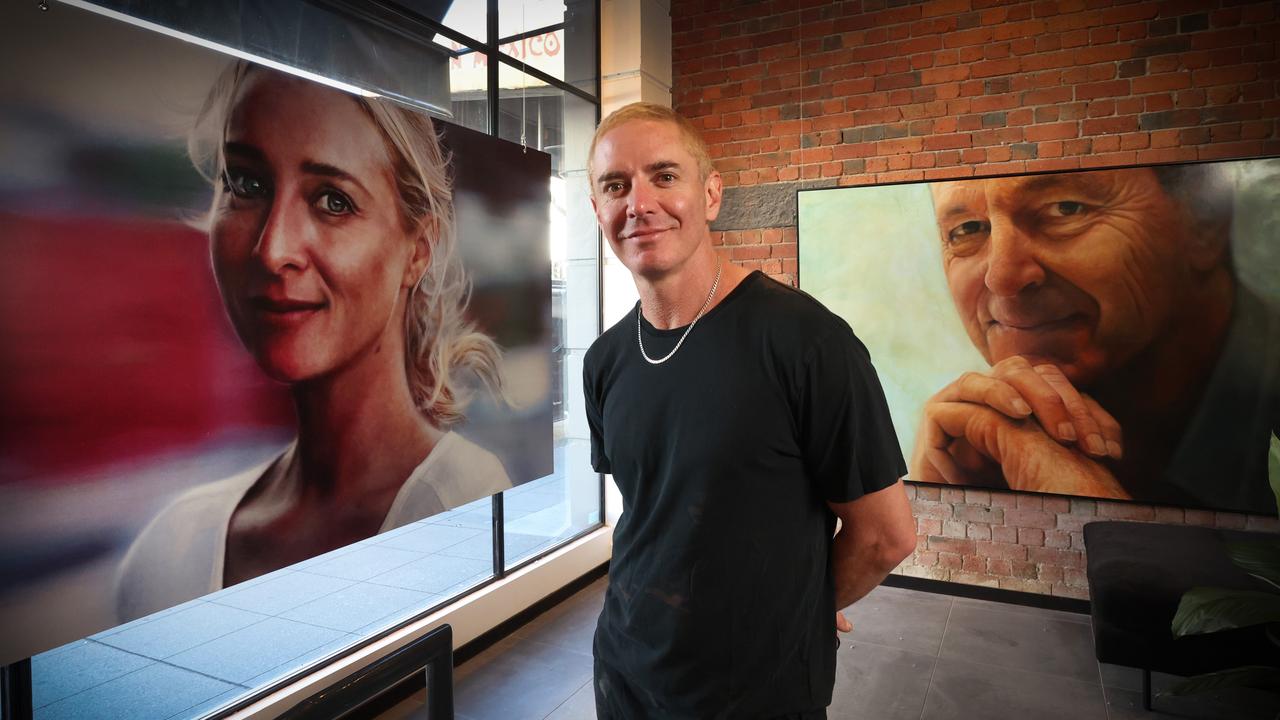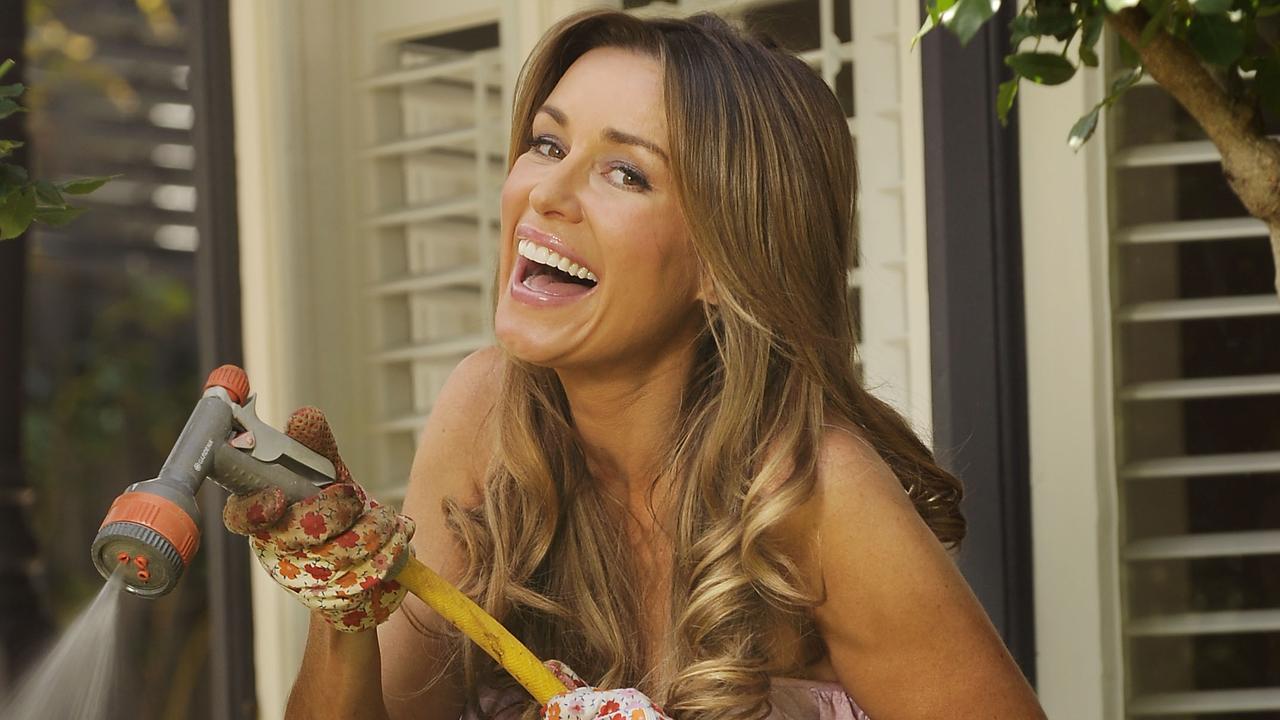Future Victoria: How the state’s most common surnames are changing
Twenty-five years ago thousands of tiny Victorians were born into a Smith family, but as Victoria’s multicultural population explodes, these are the new surnames taking over.
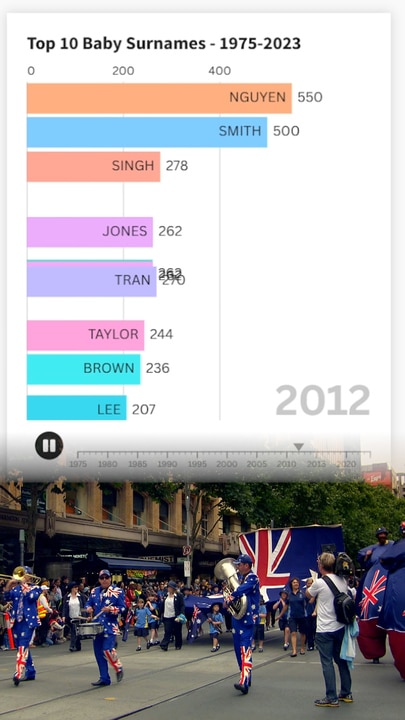
News
Don't miss out on the headlines from News. Followed categories will be added to My News.
What’s in a name?
Twenty-five years ago, thousands of tiny Victorians were born into a Smith, Nguyen, Williams, Jones or Brown family.
But a quarter of a century later, Victoria’s multicultural population has boomed.
Now, newborns are more likely to hail from a Singh, Nguyen, Kaur, Smith or Ali family.
Birth certificate data obtained by the Herald Sun from Births, Deaths and Marriages Victoria has revealed the most common surnames over the past 25 years.
In 2000, there were 527 babies born with the surname Smith, 414 with Nguyen, 277 with Williams, 272 with Wilson and 262 with Jones.
But more recently, there were 516 babies born with the surname Singh, 368 with Nguyen, 366 with Kaur, 341 with Smith and 207 with Ali.
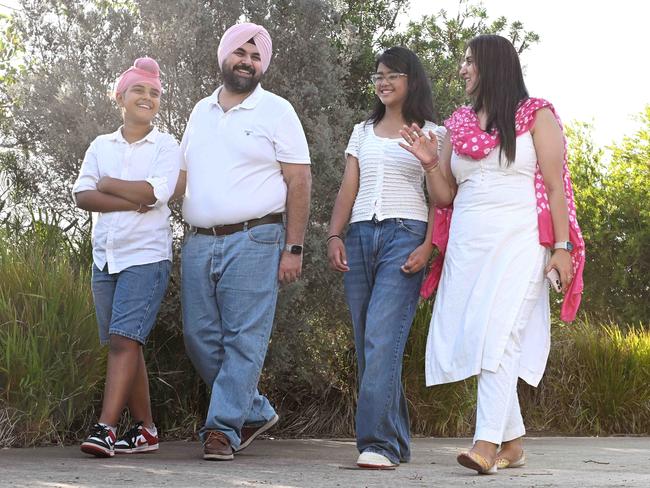
Demographer Mark McCrindle said the data highlighted the “cultural diversity” that has come to define Melbourne and Victoria.
“There’s been a shift in migration from originally Europe, then Southeast Asia and more recently India — and those surnames are highlighting that,” he said.
He told the Herald Sun the surnames reflected the most recent census data.
“India has overtaken England as the top country of birth (besides Australia) and we’re seeing that in those surnames, with Singh and Kaur rising up the ranks,” he said.
“We’ve also got Vietnam in the top 10 (countries of birth) and Nguyen is an example there.”
According to further census data, the top five most common languages spoken in Australia, other than English, are Mandarin, Arabic, Vietnamese, Cantonese and Punjabi.
Fellow demographer Simon Kuestenmacher said the wave of young Vietnamese migrants fleeing their war-torn country in the 1970s were having children in Australia by the 1990s, which was why Nguyen was a popular surname by the turn of the millennium.
“The data set lags a decade from the migration intake because it takes about a decade after coming here (for migrants) to have babies,” he said.
The surnames Patel, Jones, Williams, Brown and Wilson rounded out the top 10 in 2023.
Looking forward to 2050, Mr McCrindle said he expects to see the surname Ali rise up the ranks because Islam is the “fast growing religion” in Australia, while Mr Kuestenmacher believes Indian surnames will continue to rise as they become the “biggest migrant cohort”.
Mr Kuestenmacher said the data set was a great discovery.
“I’m almost a little bit envious that I didn’t think (of it),” he laughed.
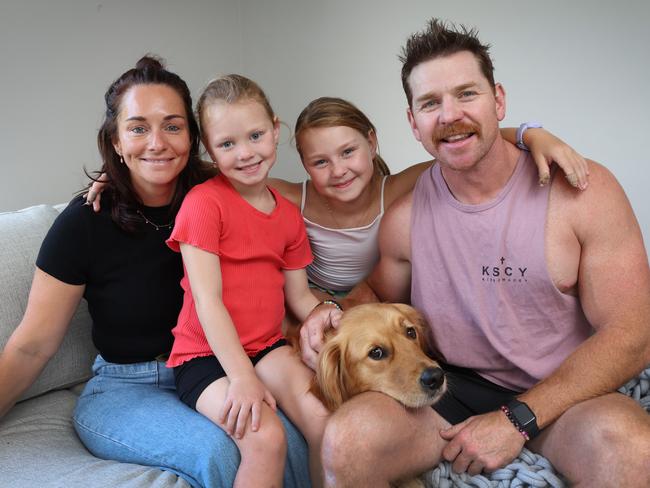
Smith Family
Southern Geelong suburb Armstrong Creek has been booming ever since it was listed as part of a new growth area to be formed from farmland in 2012.
Marcus Smith and his wife Emma were some of the first to call the area home, a decision the Smiths are thrilled they made.
They now raise their eight and six-year-old daughters Scout and Lakey in the area, along with dog Banjo.
“We love Armstrong Creek,” Mr Smith said.
“There are a lot of young families here.
“We’ve been here for 10 years now. It was a fairly new area when we built here, but we love it, because it’s pretty central to everything.”
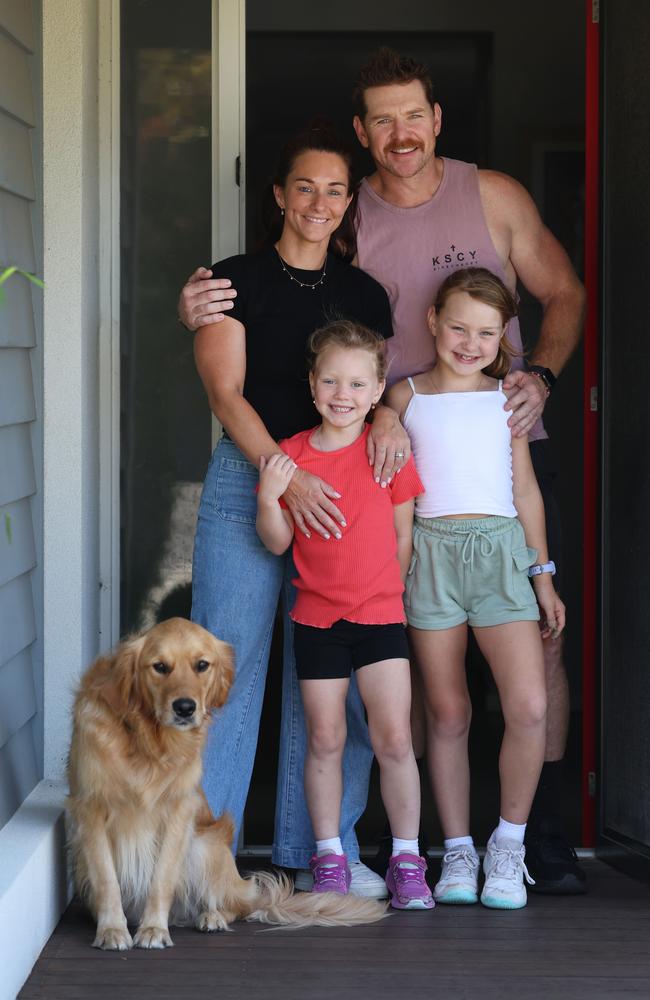
Mr Smith, a firefighter, works out of Geelong, while his wife owns her own salon in Anglesea, making Armstrong Creek the perfect location for them.
“We’ve got the beach that’s 15 minutes down the road,” he said.
“Emma travels for work, which is 30 minutes away, I travel 20 minutes in the opposite direction.
“It’s really close to shops, gyms and schools which are like 700m from home, so the kids can walk to school every day.”
But it is the rapid growth of the area causing some of the major issues, according to Mr Smith, who believes they need more investment in local healthcare.
“We would like to see a public hospital here in the future,” he said.
“The Epworth in Waurn Ponds should have been a public hospital, not a private one.
“The University Hospital in Geelong is absolutely overrun with patients. The area it covers is massive and is just constantly overflowing.
“We also need more ambulances and fire stations in the region.
“There are not enough fire stations considering the massive growth in Armstrong Creek. One has been earmarked for out here but it is years away, something needs to be done sooner.”
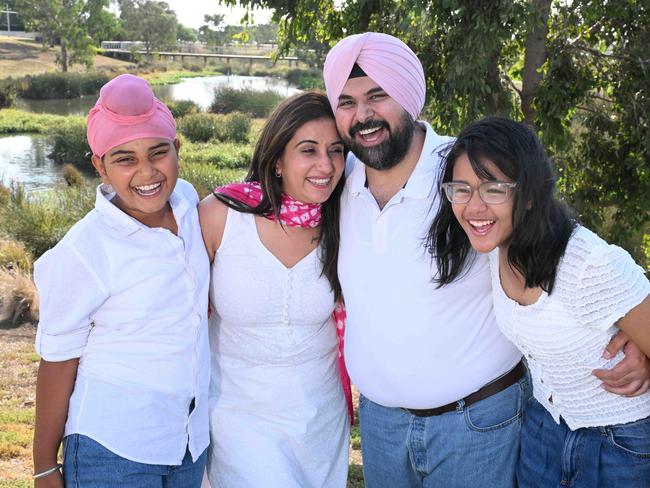
Singh Family
Pawan Singh has called Australia home for the last 15 years, but he and his family have never been happier than they are right now residing in Tarneit in Melbourne’s west.
Mr Singh, his wife Neha and their children, 12-year-old Samara and 11-year-old Nirvaan, moved to Tarneit two years ago, after a year in Knox in Melbourne’s east.
New Delhi-born Mr Singh said he loved the strong Indian community in the area.
“I love the area I live in, I have people from my community living here,” he said.
“It’s a very close-knit community. My parents also moved from India and now live here. They too have a diverse group of friends and they don’t miss being in India at all.”
Residing out in the ever expanding west, Mr Singh said he was thrilled with the way infrastructure was keeping up with population growth.
“We already have excellent schools here. The infrastructure is amazing and built keeping in mind the future development of this area,” he said.
“We have access to the best medical facilities in our area. The doctors are also from our community, so explaining our issues to them is super easy.”
Even with the thriving Indian community in the area, Mr Singh said he did sometimes worry about his children growing up outside of India.
“My children are so far away from where we come from, sometimes I feel that they are very far from their roots,” he said.
“I want my children to be proud of their roots, but also make sure that they love this land that has given us everything and not have any resentments because of discrimination.”
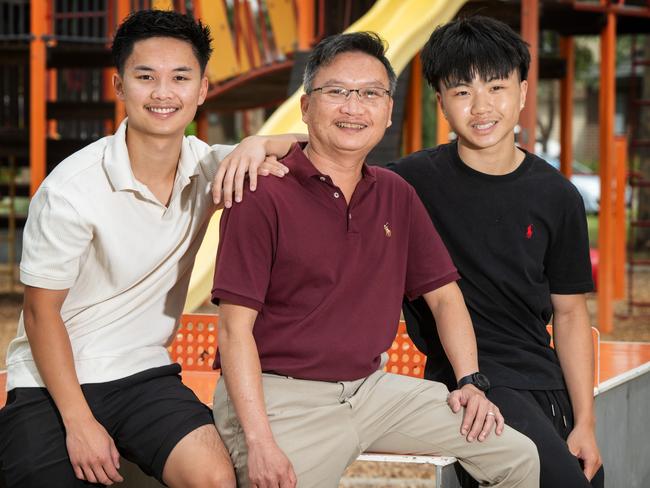
Nguyen Family
Stan Nguyen and his family happily call Point Cook home, a growing suburb situated between Werribee and Altona North surrounded by parks, beaches and wetlands.
Mr Nguyen said he credits the area in Melbourne’s west with giving his sons, 20-year-old Daniel and 16-year-old Aaron, the opportunity to start life on the right foot.
“It’s a good and growing suburb with a lot of parks,” he said.
“I am married and have two boys.
“My older boy graduated as a Dux at Heathdale Christian College and he’s now studying Engineering at University of Melbourne.
“My younger son is in year 12 now and he wants to be a doctor.”
But Mr Nguyen said he would like to see better public transport and for the area to continue to take advantage of its natural elements.
“We would love to see Point Cook have a train station and better public transport in the next 10 to 20 years,” he said.
“As a seaside suburb, I hope Point Cook can further develop its coastal areas, have more beautiful beaches and attract more visitors from other places.”
And like many others across Melbourne’s growing suburbs, Mr Nguyen would like to see better healthcare options in the area.
“I believe Point Cook needs a hospital due to its large population,” he said.
“I believe the state government has already been looking at this and will be building one in the town centre.
“Currently, most residents of Point Cook have to rely on hospitals in Werribee and Hoppers Crossing.”
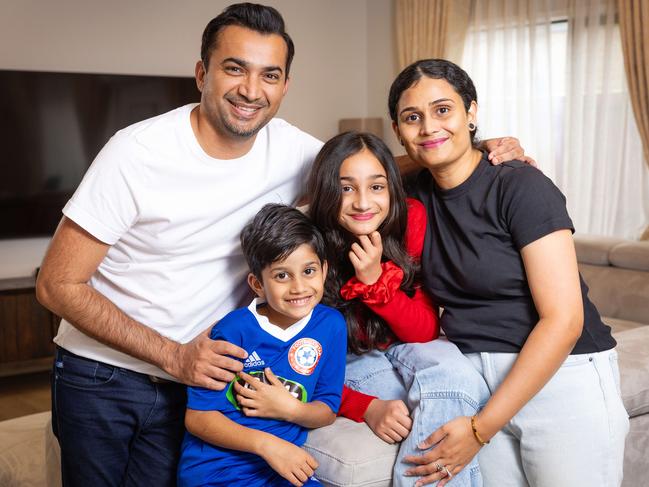
Ali Family
Ali Nawaz is raising his family in Melbourne’s west like countless others, having built and moved into his Manor Lakes home in 2018.
Mr Nawaz’s wife Hira Ali, a project manager for Save the Children, their 10-year-old daughter Rameen and their six-year-old son Zavyar love the area.
He said they have enjoyed growing along with the up-and-coming suburb, located northwest of Wyndham Vale.
“Manor Lakes is a new community,” he said.
“Everything is new here, the roads, the parks, the facilities, the houses. Everything is pretty brand new.
“The community is very diverse. We have families and communities from all over Asia and Europe, so we don’t feel like we are being placed in the corner with the same type of people.”
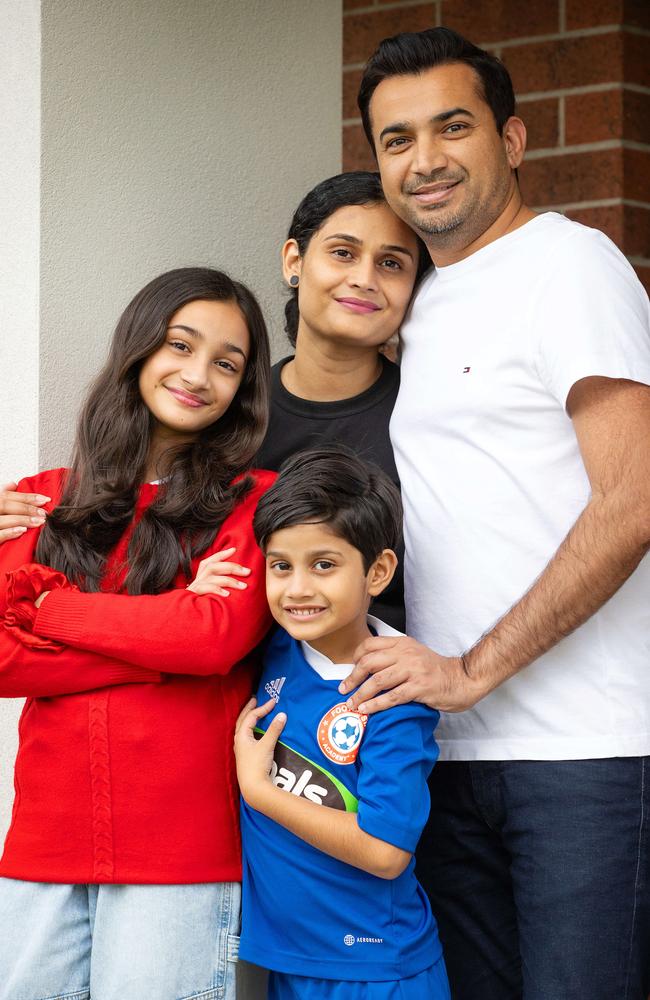
The couple migrated to Australia from Pakistan after spending time in the UK, a decision they are happy they made for their children.
“Zavyar is in grade 1 and he plays soccer and my daughter does taekwondo,” he said.
“There are lots of things happening in the area, with lots of activities for the kids.”
As the suburb continues to grow, the family wants to see better connectivity to the nearby highway and more big chain stores like Chemist Warehouse.
“Bunnings is coming,” he said.
“Bunnings was a missing piece and they have decided to launch Bunnings this year.
“I’m also hearing some talks about a homemaker compound.”
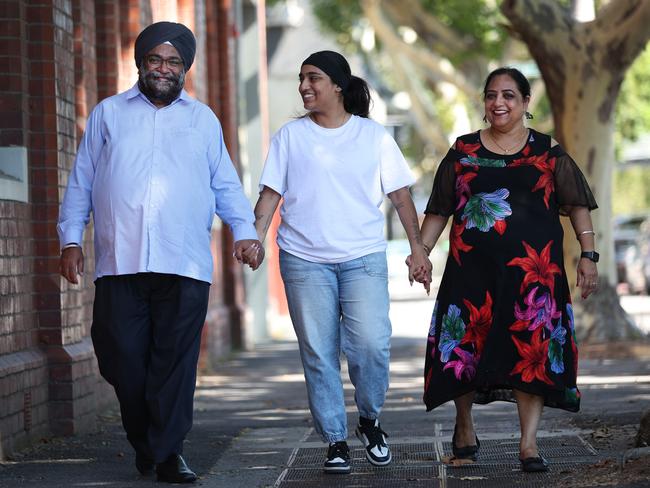
Kaur Family
Dilpreet Kaur Jaswal and her family moved into their new home in Wheelers Hill six years ago.
Ms Kaur Jaswal and her husband Paramjit came to Australia in 1992, purchasing their first home in Hoppers Crossing before moving across to Melbourne’s southeast.
She said her family decided to move Rowville in 2000 as there was not any Gurudwara (Sikh temple) in Hoppers Crossing.
“At the time, there wasn’t a big Punjabi community there and it was a small country suburb,” she said.
After buying a block of land and building a house in Rowville, the family lived there for 19 years before moving to their home in Wheelers Hill.
“We love Wheelers Hill. It’s a very leafy suburb and close to schools,” she said.
“We fell in love with this suburb and I’m pretty sure we will live here for many years.
“It is very multicultural and we’ve got all communities around us from around the world.”
Ms Kaur Jaswal said she loved walking past the nearby police academy and seeing the cadet training.
“We all look after each other. The parks make the suburb so unique, especially with the beautiful lake,” she said.
The couple both worked at the University of Melbourne before starting their own school for international students.
They make a living now offering English courses and advanced hospitality diplomas.
Originally published as Future Victoria: How the state’s most common surnames are changing

